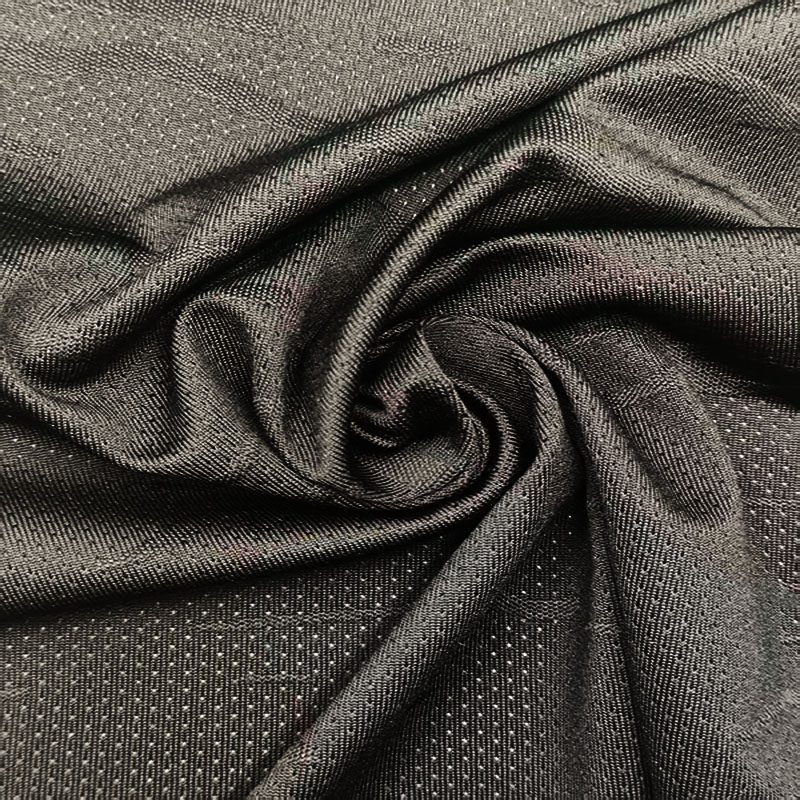Recently, the Bureau of Indian Standards (BIS) officially issued a notice, announcing that starting from August 28, 2024, it will implement mandatory BIS certification for textile machinery products (both imported and domestically produced). This policy covers key equipment in the textile industry chain, aiming to regulate market access, enhance equipment safety and quality standards. Meanwhile, it will directly impact global textile machinery exporters, especially manufacturers from major supply countries such as China, Germany, and Italy.
I. Analysis of Core Policy Content
This BIS certification policy does not cover all textile machinery but focuses on core equipment in the textile production process, with clear definitions for certification standards, cycles, and costs. The specific details are as follows:
1. Scope of Equipment Covered by Certification
The notice clearly includes two types of key textile machinery in the mandatory certification list, both of which are core equipment for textile fabric production and deep processing:
- Weaving machines: Covering mainstream models such as air-jet looms, water-jet looms, rapier looms, and projectile looms. These devices are core equipment for fabric production in cotton spinning, chemical fiber spinning, etc., and directly determine the weaving efficiency and quality of fabrics.
- Embroidery machines: Including various computerized embroidery equipment such as flat embroidery machines, towel embroidery machines, and sequin embroidery machines. They are mainly used for decorative processing of clothing and home textile products, and are key equipment in the high-value-added links of the textile industry chain.
It is worth noting that the policy does not currently cover upstream or mid-stream equipment such as spinning machinery (e.g., roving frames, spinning frames) and printing/dyeing machinery (e.g., setting machines, dyeing machines). However, the industry generally predicts that India may gradually expand the category of textile machinery subject to BIS certification in the future to achieve full-industry-chain quality control.
2. Core Certification Standards and Technical Requirements
All textile machinery included in the certification scope must comply with two core standards designated by the Indian government, which have clear indicators in terms of safety, performance, and energy consumption:
- IS 14660 Standard: Full name Textile Machinery – Weaving Machines – Safety Requirements. It focuses on regulating the mechanical safety (e.g., protective devices, emergency stop functions), electrical safety (e.g., insulation performance, grounding requirements), and operational safety (e.g., noise prevention, vibration prevention indicators) of weaving machines to avoid personal injury to operators during equipment operation.
- IS 15850 Standard: Full name Textile Machinery – Embroidery Machines – Performance and Safety Specifications. In addition to covering safety requirements similar to those for weaving machines, it also puts forward additional requirements for the sewing accuracy (e.g., stitch length error, pattern restoration), operational stability (e.g., trouble-free continuous operation time), and energy efficiency of embroidery machines to ensure that the equipment meets the production needs of Indian textile enterprises.
Enterprises should note that these two standards are not entirely equivalent to internationally accepted ISO standards (e.g., ISO 12100 machinery safety standard). Some technical parameters (such as voltage adaptation and environmental adaptability) need to be adjusted according to India’s local power grid conditions and climate, requiring targeted equipment modification and testing.
3. Certification Cycle and Process
- According to the process disclosed by BIS, enterprises need to go through 4 core links to complete the certification, with an overall cycle of approximately 3 months. The specific process is as follows:Application Submission: Enterprises need to submit a certification application to BIS, accompanied by equipment technical documents (e.g., design drawings, technical parameter sheets), production process descriptions, and other materials.
- Sample Testing: BIS-designated laboratories will conduct full-item testing on the equipment samples submitted by enterprises, including safety performance testing, operational performance testing, and durability testing. If the testing fails, enterprises need to rectify the samples and submit them for re-testing.
- Factory Audit: If the sample testing passes, BIS auditors will conduct an on-site audit of the enterprise’s production factory to verify whether the production equipment, quality control system, and raw material procurement process meet the certification requirements.
- Certificate Issuance: After the factory audit is passed, BIS will issue the certification certificate within 10-15 working days. The certificate is usually valid for 2-3 years and requires re-evaluation before expiration.
It is particularly important to note that if an enterprise is an “importer” (i.e., the equipment is produced outside India), it also needs to submit additional materials such as the qualification certificate of the local Indian agent and the explanation of the import customs declaration process, which may extend the certification cycle by 1-2 weeks.
4. Certification Cost Increase and Composition
Although the notice does not clearly specify the specific amount of certification fees, it clearly states that “the relevant costs for enterprises will increase by 20%”. This cost increase is mainly composed of three parts:
- Testing and Audit Fees: The sample testing fee of BIS-designated laboratories (the testing fee for a single piece of equipment is approximately 500-1,500 US dollars, depending on the type of equipment) and the factory audit fee (the one-time audit fee is approximately 3,000-5,000 US dollars). This part of the fee accounts for about 60% of the total cost increase.
- Equipment Modification Fees: Some of the enterprise’s existing equipment may not meet the IS 14660 and IS 15850 standards (e.g., lack of safety protection devices, electrical systems not conforming to Indian voltage standards), requiring technical modifications. The modification cost accounts for about 30% of the total cost increase.
- Process and Labor Costs: Enterprises need to arrange special personnel to coordinate the certification process, prepare materials, and cooperate with the audit. At the same time, they may need to hire local consulting agencies for assistance (especially for overseas enterprises). This part of the hidden cost accounts for about 10% of the total cost increase.
II. Background and Objectives of the Policy
India’s introduction of mandatory BIS certification for textile machinery is not a temporary measure but a long-term plan based on the development needs of the local industry and market supervision goals. The core background and objectives can be summarized into three points:
1. Regulate the Local Textile Machinery Market and Eliminate Low-Quality Equipment
In recent years, India’s textile industry has developed rapidly (the output value of India’s textile industry was approximately 150 billion US dollars in 2023, accounting for about 2% of GDP). However, there are a large number of low-quality textile machinery that do not meet the standards in the local market. Some imported equipment has potential safety hazards (such as electrical failures causing fires, lack of mechanical protection leading to work-related injuries) due to the lack of unified standards, while some equipment produced by small local factories has problems such as backward performance and high energy consumption. Through mandatory BIS certification, India can screen out high-quality equipment that meets the standards, gradually eliminate low-quality and high-risk products, and improve the production safety and efficiency of the entire textile industry chain.
2. Protect Local Textile Machinery Manufacturers and Reduce Import Dependence
Although India is a major textile country, its independent production capacity of textile machinery is relatively weak. At present, the self-sufficiency rate of local textile machinery in India is only about 40%, and 60% depends on imports (of which China accounts for about 35%, and Germany and Italy account for a total of about 25%). By setting BIS certification thresholds, overseas enterprises need to invest additional costs in equipment modification and certification, while local enterprises are more familiar with Indian standards and can adapt to the policy requirements more quickly. This indirectly reduces India’s market dependence on imported equipment and creates development space for the local textile machinery manufacturing industry.
3. Align with the International Market and Enhance the Competitiveness of Indian Textile Products
Currently, the global textile market has increasingly strict requirements for product quality, and the quality of textile machinery directly affects the quality stability of fabrics and clothing. By implementing BIS certification, India aligns the quality standards of textile machinery with the international mainstream level, which can help local textile enterprises produce products that better meet the requirements of international buyers, thereby enhancing the competitiveness of Indian textile products in the global market (e.g., textiles exported to the EU and the US need to meet more stringent quality and safety standards).
III. Impacts on Global and Chinese Textile Machinery Enterprises
The policy has different impacts on different entities. Among them, overseas export enterprises (especially Chinese enterprises) face greater challenges, while local Indian enterprises and compliant overseas enterprises may gain new opportunities.
1. For Overseas Export Enterprises: Short-Term Cost Increase and Higher Access Threshold
For enterprises from major textile machinery exporting countries such as China, Germany, and Italy, the direct impacts of the policy are short-term cost increases and higher market access difficulties:
- Cost Side: As mentioned earlier, the certification-related costs increase by 20%. If an enterprise has a large export scale (e.g., exporting 100 weaving machines to India annually), the annual cost will increase by hundreds of thousands of US dollars.
- Time Side: The 3-month certification cycle may lead to delays in order delivery. If an enterprise fails to complete the certification before August 28, it will not be able to ship to Indian customers, possibly facing the risk of order breach.
- Competition Side: Some small and medium-sized overseas enterprises may be forced to withdraw from the Indian market due to their inability to bear the certification costs or complete equipment modifications quickly, and the market share will be concentrated in large enterprises with compliance capabilities.
Taking China as an example, China is the largest source of imported textile machinery for India. In 2023, China’s export of textile machinery to India was approximately 1.8 billion US dollars. This policy will directly affect an export market of about 1 billion US dollars, involving more than 200 Chinese textile machinery enterprises.
2. For Local Indian Textile Machinery Enterprises: A Policy Dividend Period
Local Indian textile machinery enterprises (such as Lakshmi Machine Works and Premier Textile Machinery) will be the direct beneficiaries of this policy:
- Prominent Competitive Advantages: Local enterprises are more familiar with IS standards and can complete certification quickly without bearing the additional costs of cross-border transportation and overseas audits for overseas enterprises, thus having more advantages in price competition.
- Release of Market Demand: Some Indian textile enterprises that originally relied on imported equipment may switch to purchasing local compliant equipment due to delays in the certification of imported equipment or cost increases, driving the order growth of local machinery enterprises.
- Motivation for Technological Upgrading: The policy will also force local enterprises to improve the technical level of equipment to meet higher standard requirements, which is conducive to the upgrading of the local industry in the long run.
3. For India’s Textile Industry: Short-Term Pains and Long-Term Benefits Coexist
For Indian textile enterprises (i.e., purchasers of textile machinery), the impacts of the policy present the characteristics of “short-term pressure + long-term benefits”:
- Short-Term Pressure: Before August 28, if enterprises fail to purchase compliant equipment, they may face problems such as stagnation in equipment renewal and delays in production plans. At the same time, the purchase cost of compliant equipment increases (as machinery enterprises pass on the certification costs), which will increase the operational pressure of enterprises.
- Long-Term Benefits: After using equipment that meets BIS standards, enterprises will have improved production safety (reducing work-related accidents), lower equipment failure rates (reducing downtime losses), and higher product quality stability (improving customer satisfaction). In the long run, this will reduce the comprehensive production cost and enhance the competitiveness of enterprises.
IV. Industry Recommendations
In response to India’s BIS certification policy, different entities need to formulate response strategies based on their own situations to reduce risks and seize opportunities.
1. Overseas Export Enterprises: Seize Time, Reduce Costs, and Strengthen Compliance
- Accelerate the Certification Process: It is recommended that enterprises that have not yet started the certification immediately set up a special team to connect with BIS-designated laboratories and local consulting agencies (such as local Indian certification agencies) to prioritize the certification of core products and ensure that certificates are obtained before August 28.
- Optimize the Cost Structure: Reduce certification-related costs by means of batch testing (reducing the testing fee per unit), negotiating with suppliers to share modification costs, and optimizing the production process. At the same time, enterprises can negotiate with Indian customers to adjust the order price and share part of the cost pressure.
- Layout Localization in Advance: For enterprises planning to deeply cultivate the Indian market in the long term, they can consider establishing assembly plants in India or cooperating with local enterprises for production. This can avoid some certification requirements for imported equipment on the one hand, and reduce customs duties and transportation costs on the other hand, thereby enhancing market competitiveness.
2. Local Indian Textile Machinery Enterprises: Seize Opportunities, Improve Technology, and Expand the Market
- Expand Production Capacity Reserves: In response to the possible order growth, plan the production capacity in advance, ensure sufficient supply of raw materials, and avoid missing market opportunities due to insufficient production capacity.
- Strengthen Technological R&D: On the basis of meeting IS standards, further improve the intelligence and energy-saving level of equipment (such as developing intelligent weaving machines and low-energy-consuming embroidery machines) to form a differentiated competitive advantage.
- Expand the Customer Base: Proactively connect with small and medium-sized textile enterprises that originally used imported equipment, provide equipment replacement solutions and after-sales support, and expand the market share.
3. Indian Textile Enterprises: Plan Early, Prepare Multiple Options, and Reduce Risks
- Check Existing Equipment: Immediately verify whether the existing equipment meets BIS standards. If not, a equipment update plan must be formulated before August 28 to avoid affecting production.
- Diversify Procurement Channels: In addition to the original imported suppliers, synchronously connect with local compliant Indian machinery enterprises to establish a dual procurement channel of “import + local” to reduce the supply risk of a single channel.
- Lock Costs with Machinery Enterprises: When signing procurement contracts, clearly define the method of bearing certification costs and the price adjustment mechanism to avoid disputes caused by subsequent cost increases.
V. Future Outlook of the Policy
From the perspective of industry trends, India’s implementation of BIS certification for textile machinery may be the first step of its “textile industry upgrading plan”. In the future, India may further expand the category of textile machinery subject to mandatory certification (such as spinning machinery and printing/dyeing machinery) and may raise standard requirements (such as adding environmental protection and intelligent indicators). In addition, as India’s cooperation with major trading partners such as the EU and the US deepens, its standard system may gradually achieve mutual recognition with international standards (such as mutual recognition with EU CE certification), which will promote the standardization process of the global textile machinery market in the long run.
For all relevant enterprises, “compliance” needs to be incorporated into long-term strategic planning rather than a short-term response measure. Only by adapting to the standard requirements of the target market in advance can enterprises maintain their advantages in the increasingly fierce global competition.
Post time: Aug-20-2025





